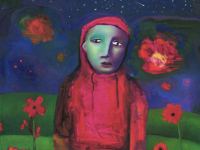
Tarantino’s eighth movie, one that almost failed to come to pass, is finally on our screens. As usual it comes with controversy, but is it good enough to brush that aside?…
Set in the wilds of Wyoming, The Hangman (Kurt Russell) is on his way to Red Rock to collect the bounty on Daisy Domergue’s head. Picking up stragglers along the way as they outrun a blizzard, the journey takes a few unexpected turns for all involved.

Tarantino brought out a typically strong performance from Jackson.
After reaching a quintessentially western log cabin, the story takes inspiration from Agatha Christie’s classic, And Then There Were None. Filled with hateful people weathering the storm, there are a lot of direct comparisons, mostly that favour Christie’s plot. Sadly it is nothing to do with the mystery of who is in cahoots with Daisy Domergue that draws the eye, but the characters’ reasons for personal dislike as the tensions build. Major Warren (Samuel L Jackson) is a particularly colourful character and plays well with his counterparts. With such a great tapestry of characters, and the context of their times, there was no need for the clumsily arranged plot devices to set up the carnage at the end. It would have been far more satisfying if the characters had got there themselves.

The soundtrack was composed, orchestrated and conducted by Ennio Morricone.
The cinematography and soundscape as always is spot on. A mixture of Enrico Morricone’s grand drawling compositions and simple but contextually fitting acoustic numbers by cast members, the soundtrack complements the movie well. As a standalone the OST is not quite as iconic as some of his other films, like Django’ or Pulp Fiction, but it is still one of the more solid cornerstones of the piece. As with all Tarantino’s films, the camerawork also does not shy from creativity, using a range of shots the camera captures everything from the glistening snow covered outback to the importance of a single jelly bean. Often creating suspense from what is not being showed, or creating drama where there is none, the cinematography draws you into the film with ease. Speaking of cinematography, Tarantino, an advocate of analogue film, revived the dormant Ultra Panavision 70 format for this film. Last used in 1966, this ultra widescreen film/projection uses a 2.76:1 ratio to create epic vistas. As this medium was used in films such as Ben-Hur, it’s not difficult to see why Tarantino used this format. The reliance on the film’s artistry could come from the lack of a conventional “good” character for the audience to invest in however, only leaving us to prefer the character that interests us the most, in my case the infamous Major Warren.
Leaving the cinema I was surprised to find three hours had passed. This is evidence enough that the movie was entertaining, however walking home there was little about the film to reflect on. I had not been particularly surprised, shocked, confused, or challenged. Not that this is always a bad thing, but after Django’s success I was expecting more.
In the end everything comes together to create a playful modern take on a western movie. All the eccentricities in Tarantino’s directing keep you immersed regardless of substance. While as senseless as the violence it portrays, it’s a clever comment on the director’s idea of the genre.
Author – Joe, Bath store






